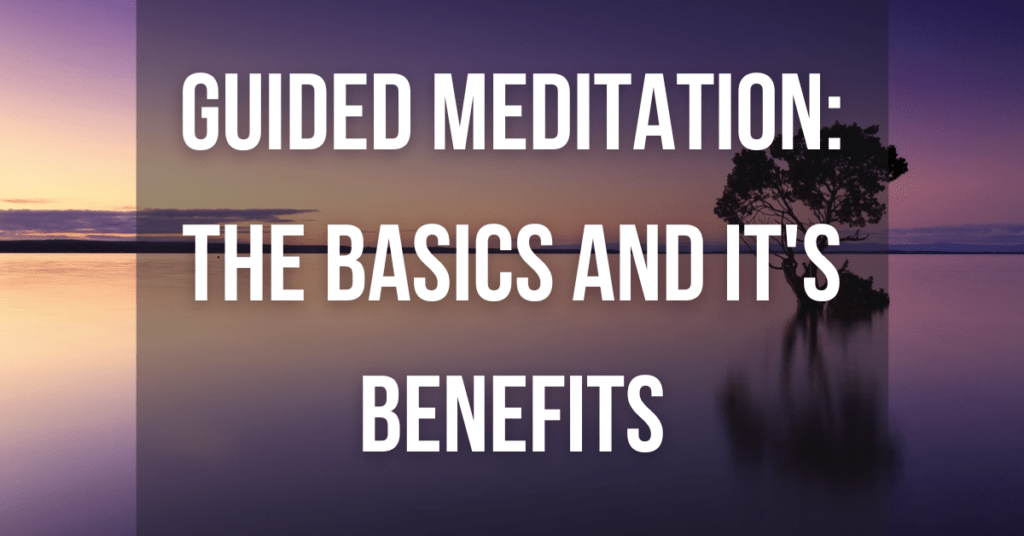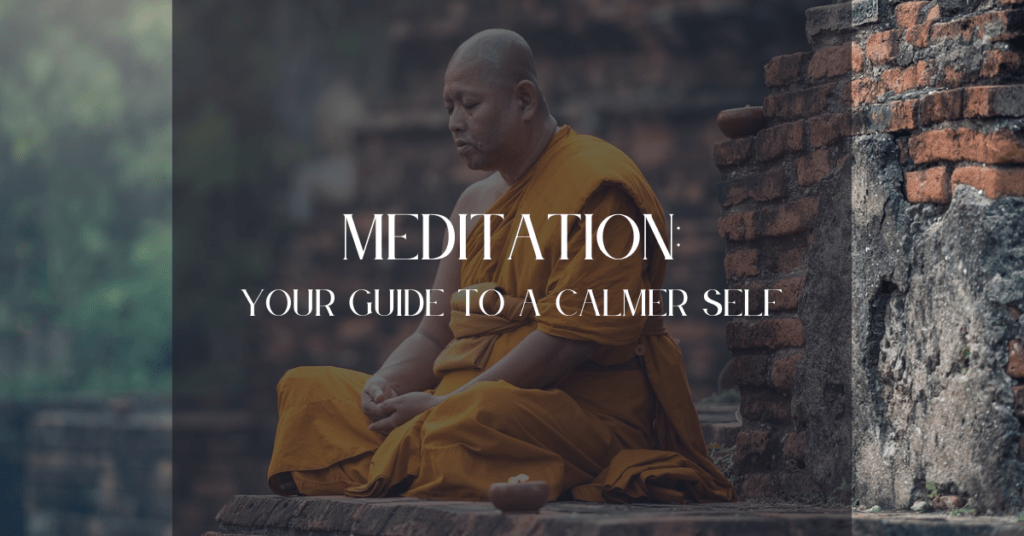
Intro
In the hectic world we live in, it is becoming increasingly important to find ways to slow down and reconnect with ourselves. One effective method that’s becoming popular is Guided Meditation. This form of mental and emotional release is simple enough for anyone to do and offers a multitude of benefits.
Understanding Guided Meditation: A Basic Overview
When we talk about Guided Meditation, it refers to a specialized meditation technique facilitated by a skilled instructor either face-to-face, via audio or video recording, or through a script. The concept of this form of meditation is to navigate participants through an array of mental imagery and experiences. These visualizations are consciously designed to elicit feelings of relaxation, enable healing, or even spur personal development.
In essence, guided meditation is an assisted form of meditation, with your thoughts being deliberately directed towards positivity to create a healing effect on the mind and body. This technique offers an alternative method to traditional meditation practices, providing the added benefit of guided direction, which can be particularly beneficial to those new to meditation.
In a guided meditation session, the facilitator’s primary role is to walk participants through a journey of their imagination. This journey might involve visualizing peaceful and relaxing settings, perhaps a serene beach or a lush forest. The overall aim is to ensure the mind is drawn away from stressful thoughts and instead, focused on calming and tranquil imagery. As the session progresses, the calming voice of the guide, often enhanced with soothing music or nature sounds, contributes to a sense of relaxation and tranquility.
This structured and directed approach to meditation makes it a practical and accessible tool for anyone seeking to incorporate mindfulness into their daily routine, regardless of their previous experience with meditation. With guided meditation, the hurdles of inexperience or lack of know-how become less significant, making the practice more welcoming and accessible to all.
The Process Involved
Engaging in guided meditation entails a few simple steps. First and foremost, it requires a peaceful, uninterrupted environment. As a participant, you should find a place that resonates calm and comfort, a spot where you can easily relax without external disturbances.
After ensuring a suitable setting, gently close your eyes to invite the meditative state. With your eyes closed, your senses become more in tune with the guide’s instructions, aiding you to better visualize the soothing scenarios they paint with their words.
Your guide will then begin narrating different scenarios designed to invoke serenity and peace. These could vary from a peaceful stroll on a deserted beach to a leisurely hike up a scenic mountain. As you immerse yourself in these mental pictures, your guide’s calming voice serves as a steady anchor, helping you navigate through the ebb and flow of your thoughts.
To further enhance this meditative experience, the guide may incorporate harmonious music or sounds of nature. These ambient sounds serve to deepen your relaxation and further detach you from daily stressors.
It’s important to note that during guided meditation, it’s completely normal for your mind to occasionally drift away from the guide’s narration. When you notice this happening, don’t panic or feel discouraged. Simply acknowledge the wandering thoughts and gently bring your focus back to the guide’s voice and the imagery they’re describing.
Overall, guided meditation is a dance between guided imagery, your imagination, and an underlying sense of serenity that unfolds as the session progresses. The process doesn’t call for any extraordinary effort on your part. It is about surrendering to the moment, allowing your guide’s voice to steer your imagination towards tranquility.
Different Forms of Guided Meditation

Guided meditation comes in a variety of forms, each one focusing on a unique goal. Mindfulness meditation, one such type, encourages participants to engage with the present moment. It draws your attention to current sensations, thoughts, and feelings, helping to cultivate a deeper awareness of your existence in the present.
Healing meditation, on the other hand, is designed to foster physical or emotional healing. This type typically employs visualization techniques that encourage the body’s natural healing processes or guides you through emotional processing for therapeutic purposes. This can be especially helpful for those dealing with illnesses, injuries, or emotional traumas.
Sleep meditation is another popular form of guided meditation. This style is typically practiced in the evening or before bedtime to aid in achieving a restful night’s sleep. This is achieved by guiding you through calming visualizations and relaxation techniques, effectively preparing your mind and body for deep sleep.
Lastly, there’s loving-kindness meditation. This form is geared towards promoting empathy and a positive attitude towards oneself and others. This type of meditation guides you to generate and send feelings of love and kindness first to yourself, then to others, creating a sense of universal love and acceptance.
Each of these guided meditation forms serves a unique purpose, and you may find one more suitable for your needs at different times. Whether you need a moment of calm, a tool for healing, assistance with sleep, or a means of fostering positivity, guided meditation offers a versatile array of practices to aid in achieving your desired outcomes. It’s about finding the right fit for you and incorporating it into your routine for optimal benefits.
Advantages of Guided Meditation
The rewards reaped from guided meditation extend across various aspects of your life. On the physical front, engaging in regular guided meditation can lead to noticeable stress reduction. It has also been known to assist in pain management by calming the mind, thereby potentially reducing the perception of pain. Another benefit tied to physical wellness is the improvement of sleep quality, as certain types of guided meditation, like sleep meditation, are specifically designed to help relax your mind and body, preparing you for a restful night’s sleep.
Mental enhancements are equally significant in the realm of guided meditation. By focusing your attention and eliminating the stream of jumbled thoughts that may be crowding your mind, it can boost your focus and clarity. This practice also promotes emotional health by offering a space and techniques to process emotions, especially during healing meditations. Additionally, guided meditation helps cultivate increased self-awareness, allowing you to recognize and understand your thought patterns, feelings, and behaviors better.
Emotionally, guided meditation helps generate a positive mindset by steering your thoughts away from negative or stressful patterns and focusing instead on uplifting, tranquil images. This positivity, in turn, can lead to improved self-esteem. Additionally, guided meditation is a powerful tool in managing anxiety and depression by fostering a state of relaxation and promoting a sense of control over one’s thoughts and feelings.
As a whole, these benefits lead to overall improvements in well-being and life quality. When incorporated regularly, guided meditation can offer a retreat from the quick pace of life, a time to reset, recalibrate, and focus on your well-being. Despite the challenges you may encounter initially, the manifold benefits that can be gained from this practice make the effort worthwhile.
How to Incorporate Guided Meditation into Your Daily Routine
Integrating guided meditation into your everyday life can be a straightforward and hassle-free process. The beauty of this practice lies in its flexibility. There’s no need for specialized tools or an extensive time commitment. Starting with a brief five-minute session each day and slowly extending the duration as your comfort level increases, is a great way to ease into this practice.
Identifying the ideal time for your meditation practice is also crucial. Some people find that a morning session helps set a positive, calm tone for the day ahead. For others, an evening session might serve as a wonderful method to decompress and process the day’s experiences. Choose a time that feels natural and stress-free for you.
Technology can be a helpful ally in your guided meditation journey. Numerous apps and online platforms offer a plethora of guided meditation resources, ranging from beginner-friendly sessions to more advanced practices. Utilizing these resources, especially in the initial stages of your journey, can offer useful guidance and structure. Whether you choose an audio guide, video session, or a written script, ensure that it aligns with your comfort and comprehension levels.
Finally, creating a conducive environment for your practice can significantly enhance your experience. Select a quiet, comfortable spot in your home where you’re least likely to be interrupted. This could be a cozy corner in your living room, your bedroom, or even your garden. The important thing is that the space should invite tranquility and comfort, facilitating your transition into a meditative state.
By being mindful of these aspects, you can seamlessly weave guided meditation into the fabric of your daily routine, making it a regular part of your self-care regimen. Remember, consistency is key in this practice, and it’s more about the regularity of your sessions rather than their length. So, embark on this guided journey towards peace, clarity, and mindfulness today.
Overcoming Common Challenges
Just as any new endeavor brings its set of challenges, guided meditation is no exception. It’s typical to encounter obstacles along the way, but understanding and addressing them can make your meditation journey smoother.
One prevalent hurdle many encounter is distractions. As a beginner, you may notice that your mind tends to drift towards thoughts of daily chores, professional responsibilities, or personal dilemmas during your meditation sessions. It’s crucial to remember that this is a normal part of the process. Instead of growing frustrated when this happens, calmly acknowledge your straying thoughts and guide your focus back to the soothing voice of your guide and their calming narrative.
Another potential challenge could be a feeling of self-consciousness or uneasiness during meditation. This could be particularly pronounced if you’re practicing in a group setting or if you’re unsure about whether you’re ‘doing it right.’ In such situations, it’s helpful to bear in mind that meditation isn’t about perfection, but about individual experiences. There’s no one-size-fits-all in meditation, and everyone’s journey is unique. It’s more important to focus on finding what feels right and comfortable for you, even if that means modifying the practice to suit your needs.
It’s also common for beginners to struggle with physical discomfort during meditation. This could range from restlessness to muscle tension or even minor aches and pains. Ensuring a comfortable sitting position and a tranquil environment can help alleviate these issues. Over time, your body will adapt to the practice, and physical discomfort should diminish.
Lastly, it’s normal to experience some impatience or frustration if you don’t notice immediate results. Guided meditation is a process that yields gradual, not instant, benefits. It’s essential to be patient with yourself and remember that progress might not always be readily visible. The key is to stay consistent with your practice, trusting in the process, and knowing that with time, the benefits will begin to unfold.
By addressing these common challenges head-on and maintaining a flexible, patient approach, you can make your guided meditation journey enjoyable and rewarding.
The Importance of Patience and Practice in Guided Meditation
Developing proficiency in guided meditation is akin to learning any other new skill – it necessitates patience and persistence. Feeling pressure to quickly achieve a profound sense of calm or an empty mind can counteract the very essence of this practice. It’s pivotal to remember that guided meditation’s aim is not about creating an absence of thoughts, but fostering a conscious awareness of them without judgment.
As you engage in regular practice, you’ll notice that maintaining concentration becomes more natural and the rewards start seeping into your everyday life. But, it’s vital to understand that these improvements are gradual and often subtle. Therefore, resist the temptation to evaluate your progress after each session. Instead, take a step back and assess the bigger picture of your mental and emotional well-being over time.
Patience with oneself is fundamental in this journey. It’s okay if you don’t experience immediate transformations or profound revelations. The process of guided meditation is about gently peeling back the layers of your consciousness, and this takes time. Remember that every step forward, no matter how small, contributes to your overall growth and well-being.
In the same vein, practice is equally important. The more you meditate, the more comfortable you become with the process and the easier it gets to guide your mind away from daily stressors and towards a state of tranquility.
In essence, guided meditation is a journey, not a destination. The benefits don’t always unfold in the expected timeline or manner, but they do come with patience and regular practice. So, rather than focusing on attaining a specific outcome, enjoy the journey, embrace the calm, and watch as the myriad benefits of this beautiful practice start to enrich your life.
Guided Meditation Online Resources:
Here are 10 online resources that offer guided meditation sessions:
- Jon Kabat-Zinn (YouTube):
- Channel: Jon Kabat-Zinn
- Jack Kornfield (YouTube):
- Channel: Jack Kornfield
- The Mindful Minute (Podcast):
- Podcast: The Mindful Minute
- 10% Happier with Dan Harris (Podcast):
- Podcast: 10% Happier
- The Meditation Podcast:
- Podcast: The Meditation Podcast
- Guided Mind – Guided Meditations:
- Website: Guided Mind
- Chakra Healing (YouTube):
- Channel: Chakra Healing
- Jason Stephenson – Sleep Meditation Music (YouTube):
- Channel: Jason Stephenson
- The Honest Guys – Relaxing Music & Sounds (YouTube):
- Channel: The Honest Guys
- Mindful Powers App:
- Website: Mindful Powers
These resources cater to a variety of preferences, offering guided meditations for different purposes, including relaxation, mindfulness, sleep, and self-compassion. Whether you’re a beginner or an experienced meditator, these platforms provide a diverse range of guided sessions to support your journey.


